A 360 camera under the stars. Is it possible to use a consumer 360 camera, such as Insta360 ONE X2, to capture the entire celestial vault? I propose here to examine this use (particularly interesting for astrophotographers), and to study the questions that arise, in particular on the most appropriate settings.
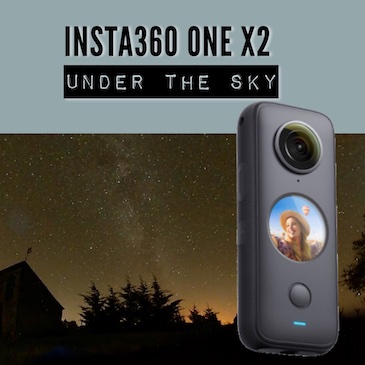
BACKGROUND
The celestial vault is a half-sphere that is not easy to capture in full with a standard camera. With this type of equipment, the approach consists in following the method of creating a panorama in several captures – see the Guide Panoramic. The number of captures required depends on the focal length used, unless you have a fisheye lens, it will take around ten images which must then be assembled to form a single image. This assembly is also not easy to make, the junction points between the images being punctual elements, the stars.
Under these conditions, it clearly appears that the possibility of capturing the entire vault in a single shot is a very attractive idea. 360 cameras thus seem to find a new use. However, without much surprise, we can already say – given the resolution current 360 cameras for the general public – that these images will have the major advantage of covering the entire sky in a single capture, and thus very simple to produce, but will suffer at the same time from several major drawbacks: the limited resolution and the behavior in low light largely perfectible. We bet that the evolution of 360 cameras in the years to come will make it possible to fill – at least partially – the shortcomings highlighted here.
SOME EXAMPLES
Before examining in more detail the influence of sensitivity settings and exposure time, I offer here some examples taken from a 360 image of a single ONE X2.
Milky Way
The wide field makes it possible to represent the Milky Way along its length, it is perfectly perceptible despite the light pollution and the compactness of the ONE X2. I find that the result is nevertheless interesting, especially if you consider that it is a consumer camera that is not intended for astrophotography. Also note the ease of implementation to obtain such an image.
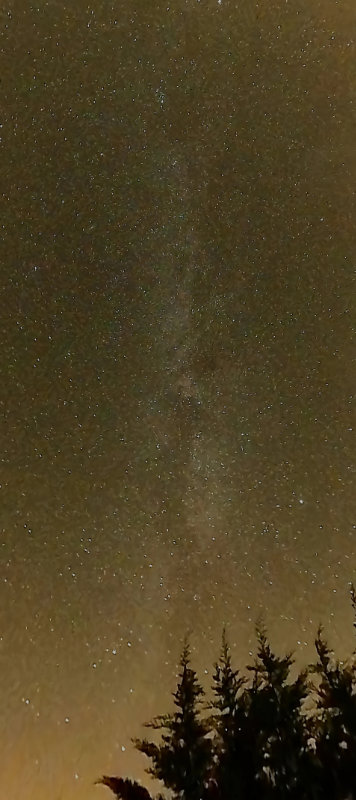
Jupiter and the Milky Way
In this closer view, the Milky Way is visible again, a little less because it is closer to the horizon and to areas with light pollution. There is also the planet Jupiter. The resolution is quite low, it will take a few years for consumer 360 cameras to be able to deliver high resolution images of this type of view.
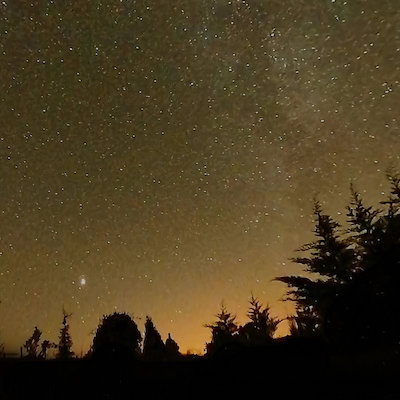
Complete vault of heaven
The example that illustrates this article was captured in the countryside, a few kilometers from small towns, which explains the light pollution visible on the horizon, while having the milky way perceptible.
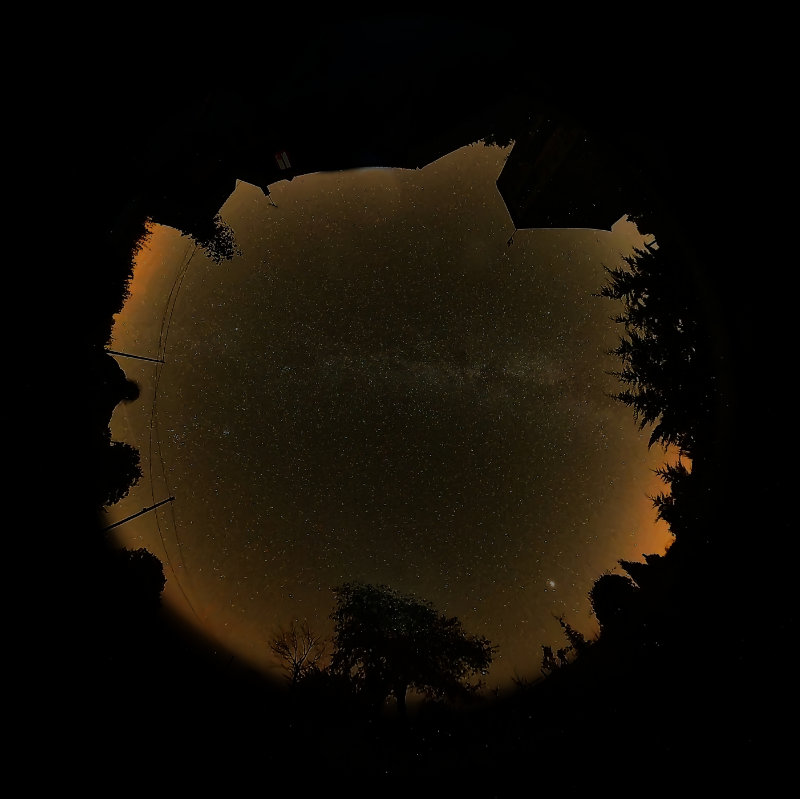
WHICH SETTINGS TO CHOOSE?
For this very advanced use, the question arises of the choice of the best settings. In the following, I examine the influence of sensor sensitivity and exposure time. The following example gives an initial idea (note: do not take into account the bluish light that comes from the ONE X2’s operating indicator. In real conditions, care should be taken to direct this indicator towards the ground so that its light is not perceptible in the celestial vault).
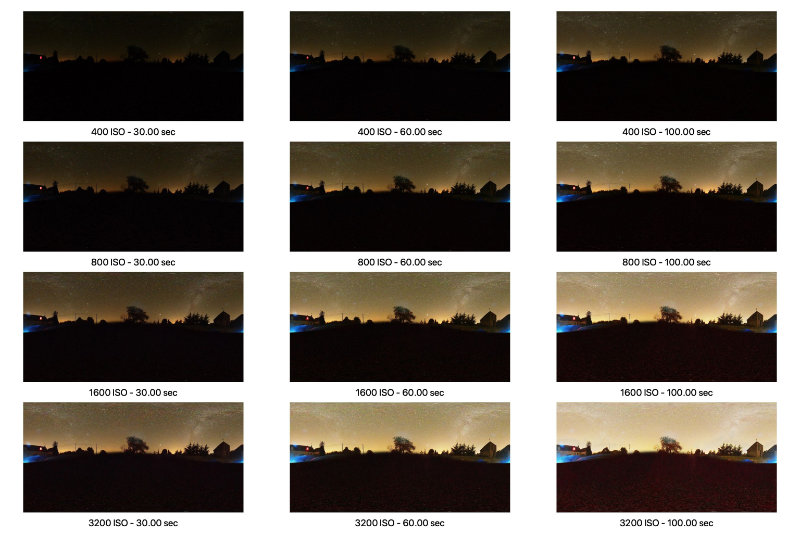
In this plate, we can compare here the influence of the two parameters: the sensitivity and the exposure time.
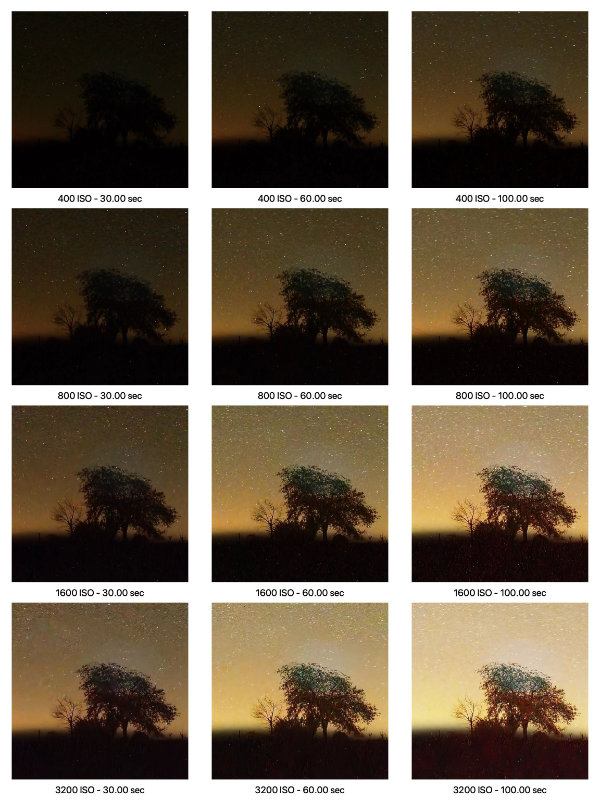
SENSITIVITY
Now let’s examine the variation of this parameter according to the values 400 ISO, 800 ISO, 1600 ISO and 3200 ISO, which is the maximum possible value with the Insta360 ONE X2 camera.
The maximum sensitivity value gives very noisy images with reduced contrast compared to lower sensitivity values. This phenomenon is not specific to the ONE X2 camera, in general the manufacturers provide access to the most advanced sensitivity, which gives almost unusable images.
Series on a detail without exposure compensation:
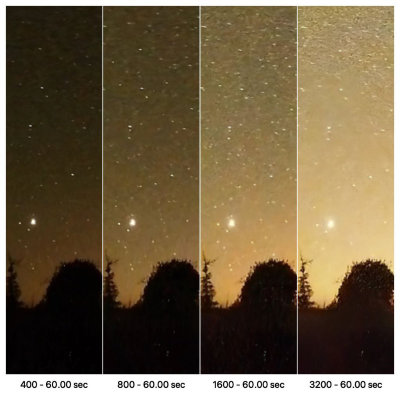
Series on a detail with exposure compensation:

In these boards, we will remember that the choice of sensitivity should be at most ISO 800 or ISO 1600.
EXPOSURE TIME
The empirical rule known as “500” gives the exposure time not to be exceeded to keep punctual stars. Beyond that, the stars become a mini line.
The maximum exposure time is defined by 500 divided by the focal length (expressed in mm). For the ONE X2 whose focal length is 7.2mm, the maximum exposure time would be 69 seconds.
Series on a detail without exposure compensation:
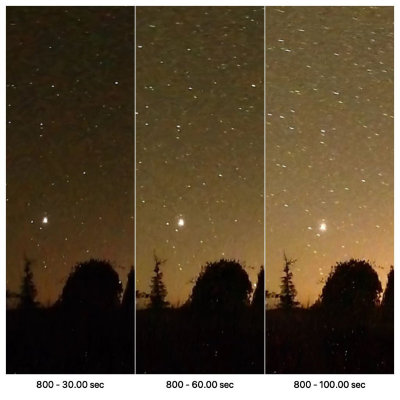
Series on a detail with exposure compensation:
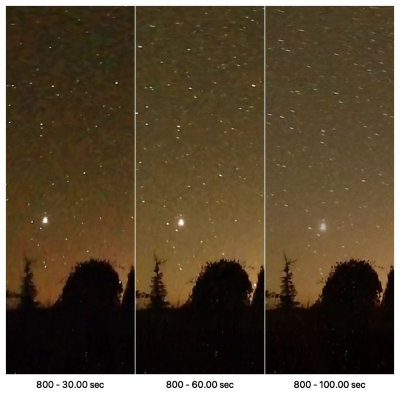
As can be seen in the series above, the stars are point-like up to 60 seconds. In the 100 second frame, the stars start to be dashes.
In case the image is intended to be merged with other similar images to create a star mesh, the exposure time of 100 seconds is usable.
On the other hand, if the image is intended to be used alone, if it is expected to represent reality, then it is advisable not to select an exposure time greater than 60 seconds.
CONCLUSION
The 360 cameras for the general public of the moment, type Insta360 ONE X2, make it possible to capture images of the night sky. It is still too early to obtain high definition images.
In terms of settings, it will be necessary to avoid the maximum sensitivities of the camera. For the ONE X2, we will limit ourselves to 800 ISO, see 1600 ISO. For the exposure time, the maximum will be 60 seconds for a single image, and may go beyond for star nets.
